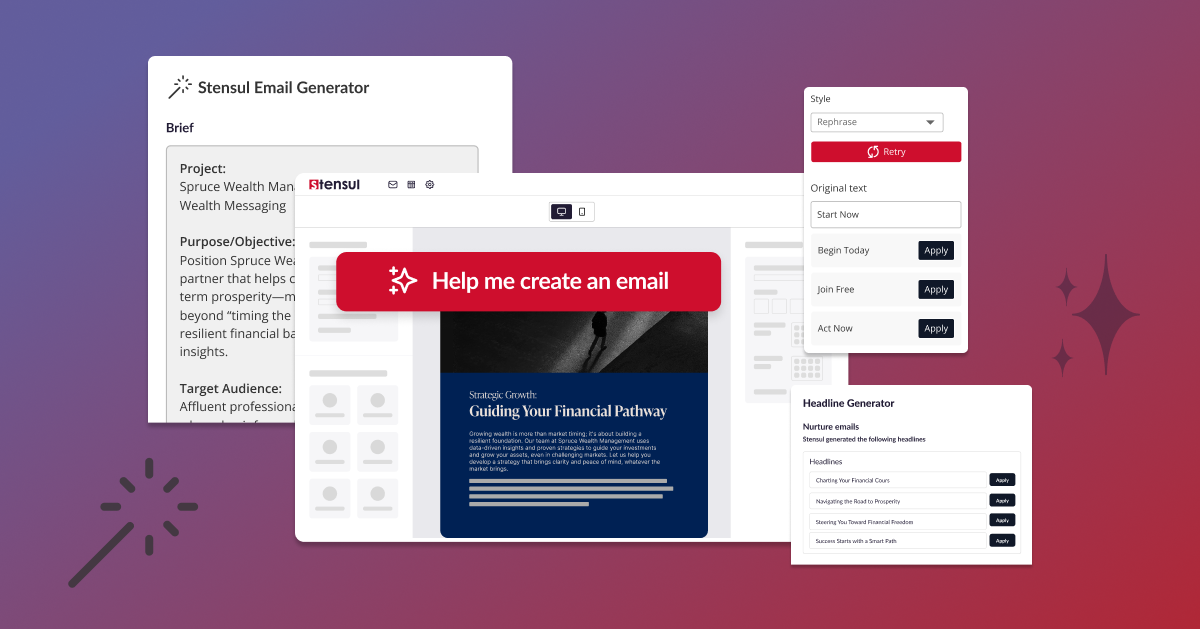If your campaigns are consistently running behind, your team feels overextended, and content still ends up off-brand. It’s probably not just a resourcing issue. The root cause might be harder to spot: your Creation Operating Model a.k.a. the invisible structure behind how marketing work gets done.
For most marketing leaders, workflow breakdowns don’t show up all at once. They build slowly over time, hidden beneath urgent deadlines and pieced-together processes. But left unchecked, they stall innovation, erode ROI, and undermine your team’s ability to scale.
So how do you know if your Creation Operating Model is helping or hurting? Start by asking these five questions to help diagnose your marketing ops workflow problem.
5 questions to ask to diagnose your marketing ops workflow problem
1. Are we always scrambling to meet deadlines, even when volume hasn’t changed?
When urgency becomes the norm and not the exception, you’re likely compensating for workflow inefficiencies. If every campaign feels like a fire drill (even repeatable ones), it’s a red flag that your process is reactive instead of resilient.
This kind of operational strain can often be traced back to rigid templates, unnecessary handoffs, or tools that don’t talk to each other not a lack of talent or effort.
Insight: A team that’s “always behind” probably isn’t underperforming, they’re just overburdened by a flawed process.
2. Does creating one asset involve too many hands on deck?
A common sign of a broken model is messy-collaboration: where an email build requires a marketer, a designer, a developer, a QA reviewer, a brand approver, and sometimes a second round of edits.
Each step may be necessary, but collectively, they slow everything down and introduce risk. If simple changes require dev tickets, or if stakeholders are reviewing layouts for the fifth time, your system isn’t streamlined, it’s stuck.
3. Are non-technical users empowered to build or constantly blocked?
When only a few people can “work the system,” your creation process becomes a bottleneck.
Marketers shouldn’t need to code to build a campaign-ready asset. But in many enterprises, creating a compliant, brand-safe email still requires specialized knowledge or navigating a complicated template that breaks under pressure.
If your MOPs team is fielding “can you just build this for me?” requests daily, you’re overdue for a rethink.
4. How often do small updates lead to big delays?
Whether it’s a text tweak triggering a full re-QA, or a last-minute image change requiring design review, small changes shouldn’t grind your system to a halt.
Delays like these signal a fragile process. One that lacks built-in guardrails and governance, where every update introduces uncertainty instead of flowing through a controlled system.
A modern creation model absorbs change without chaos. If your team can’t pivot quickly without risk, it’s time to fix the foundation.
5. Are we investing more time in execution than strategy?
When ops leaders spend their days chasing down approvals, formatting briefs, and translating requests, they’re stuck in execution mode. You know your time is better spent optimizing performance, aligning with cross-functional stakeholders, and testing new innovations. But broken workflows trap your team in manual, low-leverage work.
Reclaiming that time doesn’t start with new hires. It starts by diagnosing and redesigning how work moves through your team.
Don’t just patch the workflow. Rethink the model.
Every marketing org has a Creation Operating Model, whether they realize it or not. If your process is built on outdated systems, too many handoffs, or rigid templates that weren’t designed for scale or speed, no amount of optimization will solve the real problem.
At Stensul, we help enterprise teams transform their workflows with built-in governance, intelligent automation, and no-code modules that empower more people to build safely and strategically.
Because the real competitive advantage isn’t what you create. It’s how you create it.
Ready to see where your process stands?
1. Audit your Creation Operating Model: Use our SPEED Framework to uncover where AI can drive efficiency—and where it may be creating risk.
2. Calculate your opportunity: Try our Email Creation Cost Calculator to see what slow processes are costing your business.
3. Get the toolkit: Download the AI-Powered Email Toolkit to begin reimagining your workflow—safely and strategically.


